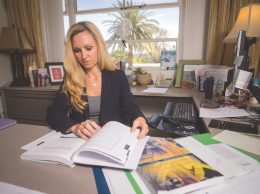By Jonathan Fraser Light
It’s exhausting for employers to try to keep up with all the sometimes inconsistent and contradictory federal and state rules for employer COVID-19 compliance.
Here’s the latest on sick time pay and COVID reporting and quarantine laws, but be aware that all of this could change:

The baseline for paying COVID-related sick time is the federally expanded Family Medical Leave Act (FMLA) under the CARES Act (in effect until Dec. 31, but perhaps will be extended). The California Legislature added Labor Code sections 248 and 248.1 to close some CARES Act loopholes.
The first relates to food-sector workers at companies with at least 500 employees. The second covers all types of employers with at least 500 employees, health care employers that previously invoked the federal exemption for sick pay to health care providers, and to first responders.
Under the new California laws, which are almost identical, these employers now have to pay the same 80 hours over two weeks in sick leave compensation for full-time workers as under the federal law (and part-timers under various formulas).
If employers have the ability to apply the federal CARES Act sick leave criteria to its business, they should, because the state law contains no tax credit. If an employee has already received federal sick leave COVID money, then the employee would not be eligible for the state money under these laws. Section 248.1 requires employers to indicate on each non-food-service worker’s paystub how much COVID sick time is available.
On Nov. 30, Cal/OSHA dramatically expanded an employer’s obligation to pay for sick time when an employer requires an employee to stay home because of an exposure at the worksite. The law suggests that an employer may have to pay even if the employee already received federal or state money—essentially requiring payment multiple times whenever there is a potential or actual exposure at the worksite that causes an employer-mandated quarantine.
Another California law, AB 1159, now mandates that an employer report any confirmed positive COVID test to its workers compensation carrier if the infected worker was at the worksite within two weeks of a positive test (home-based workers don’t count). The law is retroactive to July 6 for any positive tests known to the employer. If the employer has at least four confirmed cases—or 4% of the workforce at a business with more than 100 employees—the employer must report this “outbreak” by phone to local and state public health authorities and to affected workers (including independent contractors and exposed clients, customers and patients).
A tougher law, AB 685, effective Jan. 1, says that if an employer has at least three “exposures” at the worksite to a “qualified individual” within a two-week period it must report this “outbreak” to state and local health officials and could face a shutdown. A “qualified individual” is someone who has a positive test, is diagnosed by a health care provider, or is ordered to isolate by a public official. We don’t know what “exposure” means, but we are hopeful that it’s the cumulative total of being exposed to someone for 15 minutes within 6 feet over 24 hours.
Following the correct quarantine guidelines is another tricky issue. If an employee is exposed, the state still advises a 14-day quarantine. The federal CDC has said seven to 10 days is OK, but that was more due to political pressure. In California, if an employee is symptomatic or has a positive test, then the recommended quarantine is 10 days after diagnosis. The employee can then return to work assuming no fever for 24 hours and no other continuing symptoms except loss of taste and smell.
Perhaps surprisingly, employers need not require a negative test result before allowing a previously COVID-infected employee to return to work. The reasoning is that post-infected tests may be inaccurate, delayed, or medical certification may be too difficult to obtain for most employees. Instead, employees can obtain a telephonic clean bill of health or they can simply certify their health status to their employer.
Most employers want to do the right thing by providing a safe work environment and following sick leave guidelines. But with so many moving parts, that’s nearly impossible. When the dust settles after the COVID crisis, let’s hope employers won’t be penalized for not getting everything exactly right.
• Jonathan Fraser Light is the managing attorney at employment law firm LightGabler in Camarillo. He can be reached at jlight@lightgablerlaw.com.






 Print
Print Email
Email

















